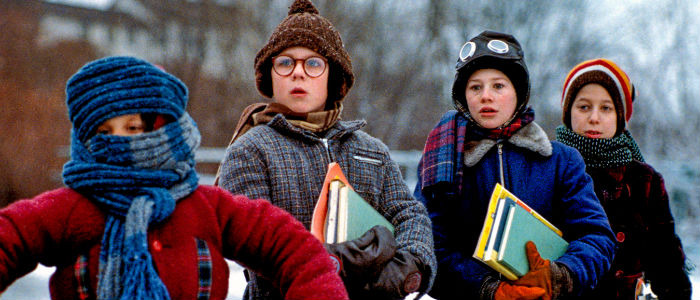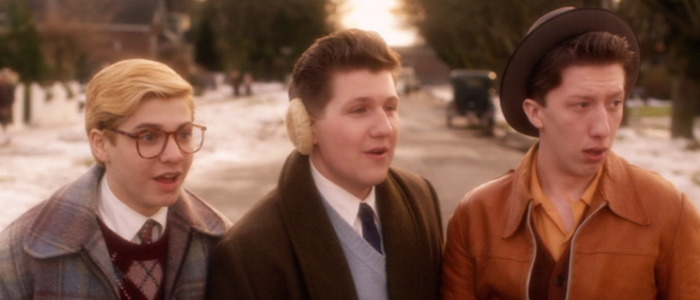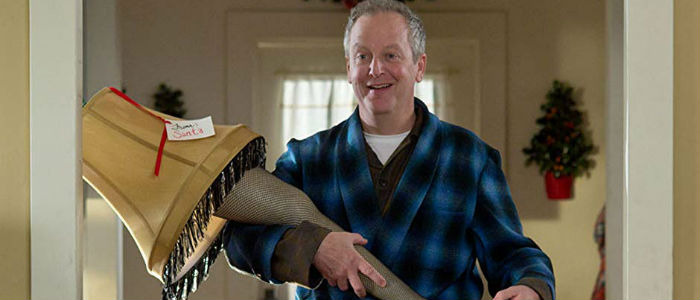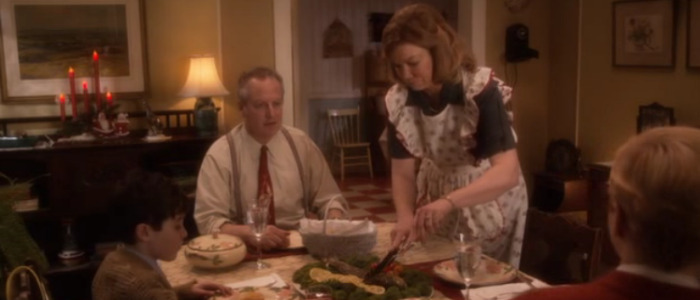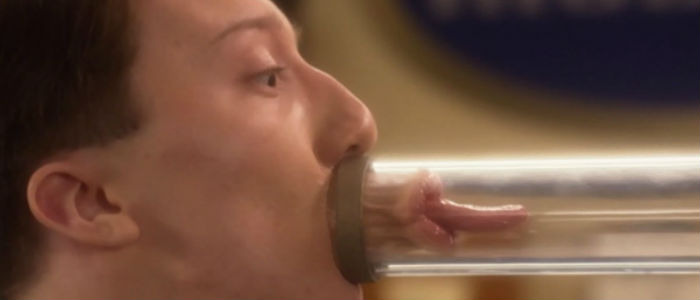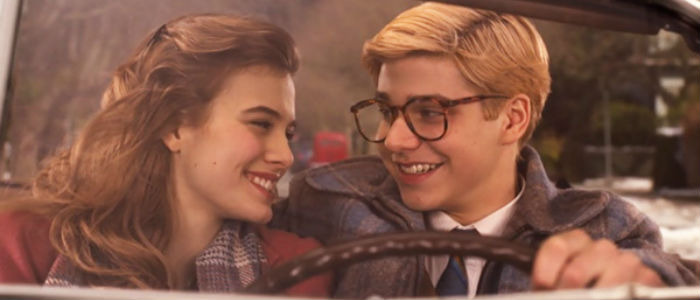'A Christmas Story 2' Is A Lump Of Coal In Moving Picture Form
(Welcome to DTV Descent, a series that explores the weird and wild world of direct-to-video sequels to theatrically released movies. In this edition, we chug some leftover eggnog while unwrapping the sequel to the best and most quotable Christmas movie of all time!)
We're in the back half of December, and I'm once again visiting DTV sequels to popular Christmas movie favorites. Last time I apparently committed multiple sacrileges by calling out Jingle All the Way's mediocrity, suggesting the Larry the Cable Guy-led sequel does a better job with the heart, and then slamming the loud and unfunny National Lampoon's Christmas Vacation. (Opinions!) I'm hoping to be a bit less controversial this week by watching the follow-up to 1983's beloved holiday masterpiece, Bob Clark's A Christmas Story.
The film got an official sequel in 1994's It Runs In the Family, and while it features an all-new cast both Clark and writer/creator Jean Shepherd returned. It's not great, but hey, continuity! 2012's A Christmas Story 2 doesn't even have that going for it, though, as new faces fill every role both on and off camera. Is that a bad sign? Probably, but it's never too late to wish for a Christmas miracle.
The Beginning
It's Christmas, 1940, and little Ralphie Parker wants just one thing beneath the tree on Christmas morning – a Red Ryder carbine action two-hundred shot range model air rifle. It's his top priority as he tries to convince his mom and dad to get it for him and even hopes to recruit his teacher to his cause with a smartly penned essay. Life has other plans, though, and his days are interrupted by scuffles with local bullies, accidental utterings of the F-word (and I don't mean fudge), and the constant bantering between his parents. It's an uphill battle, and not even an encounter with Santa Claus turns out all that promising. Will he get the one gift he wants or will this go down as the worst Christmas ever? Or, just maybe, could it be the best Christmas he'll ever know?
The DTV Plot
It's Christmas, 1945, and not so little Ralphie Parker wants just one thing on Christmas morning – a 1938 Mercury Eight convertible car. His efforts to convince his notorious skinflint of a father are dead on arrival, but his optimism is encouraged every time he sees the car on the local used automobile lot. Encouraged by his friends, Flick and Schwartz, Ralphie climbs behind the wheel for a mental test drive only to see his clumsiness leave the car damaged to the tune of $85. Can he pay it off before Christmas to avoid going to jail? He and his friends get jobs at the local department store, but hijinks ensue leaving them even further in debt. Yeah, Ralphie's gonna be saying fudge a lot this Christmas.
Talent Shift
As mentioned above, the late, great Bob Clark directed the original film – which makes for a fantastic double feature with his other holiday classic, Black Christmas – and he co-wrote the script alongside Jean Shepherd and Leigh Brown. The film is based on Shepherd's semi-autobiographical collection, In God We Trust: All Others Pay Cash. Shepherd also narrates with the warm vocal stylings of someone who's not only lived some of these events but also cares about them.
Ralphie is brought to timeless life by Peter Billingsley (Death Valley, 1982) with a performance that channels the innocence and singular focus of children better than most. He was already a five-year veteran of Hollywood by then, and his movie parents brought even more cachet. Melinda Dillon (Slap Shot, 1977) brings both warmth and wit as his mother, while Darren McGavin (The Night Stalker, 1972) brings his playfully gruff weight to the role of Ralphie's old man. The rest of the cast were mostly newcomers, but the actors behind his best friends and the bully went on to become familiar faces in the likes of The Brady Bunch Movie (1995), Transformers (2007), and adult cinema.
A Christmas Story 2 doesn't quite have the same lineage. Director Brian Levant is a known quantity and a successful filmmaker, but you'll note neither of those adjectives have any connection to quality. Beethoven (1992), The Flintstones (1994), and, wait for it, Jingle All the Way (1996) are his three biggest hits. Those are studio pictures, though, meaning he was able to attract name talent to the films. It's a muscle he couldn't flex here which means the only recognizable onscreen talent is Daniel Stern as Ralphie's dad. But hey, at least he got Nat Mauldin to narrate and write the script.
How the Sequel Respects the Original
The original movie is a comedy about family. There are a lot of moving parts and funny bits guaranteed to leave viewers reflecting fondly on their own childhood interactions and desires, but it ultimately all comes down to the love of family. It accomplishes this through humor, rich character, smart writing, and a warm appreciation for the moments that truly matter. It's as sincere as it is wacky, and the pieces just fit together with an invisible effort.
The sequel is also a movie.
Look, the movie tries, and after the box-office failure of It Runs In the Family – $71k worldwide gross on a $15m budget! – it's understandable that the filmmakers would try to hew a bit closer to the original. And by "a bit" I, of course, mean copy the original at every turn. At a certain point, though, the question becomes why make it at all?
How the Sequel S***s on the Original
I'm not exaggerating about the sameness of it all. Yes, it takes place five years later, and yes, Ralphie has traded in his obsession for a gun to a car instead – both items notable for the death and damage they cause in the hands of young men, but please continue – but like all lazy sequels, it patterns nearly every beat on the earlier film. Ralphie still has fantasies, but he's traded in cowboy villains for Nazis and teenaged girls in peril. (You won't want to miss the orgasmic look on Ralphie's face as he bangs his cymbals after secretly smelling a girl's hair. Sorry, typo, you will definitely want to miss that.) Christmas dinner is messed up again, the boiler is still making noise and challenging the old man to fights, the sexy leg lamp is back in the picture, the dad's a cheapskate who prides himself on his negotiating skills, Flick gets his mouth stuck on something, Randy still gets bundled up to go outside, and so on. Aunt Clara's tacky clothing gift returns too, but at least this is given a minor subversion.
For all of its copying, the film neglects to mirror the parts of the original that really matter. The family dynamic is absent leaving us with actors playing roles and nothing more. Stern is an always welcome presence in movies, but he's incapable of reaching McGavin's legendary level of crankiness. His attempts at being gruff feel like acting rather than part of his real personality. Stacey Travis is equally limp as Ralphie's mom, and a side by side comparison with Dillon's portrayal in the original is almost unfair. Dillon brings immense humanity and sweetness to the role most evident in her protective warmth for her sons. The emotion is missing here throughout as the family never connects with one another, and there's no affecting exchange to be found. The film needs something on par with original Ralphie's meltdown as he beats the bully into oblivion while mouthing the dirtiest words imaginable before being comforted by his mom. A minimal attempt is made here with his decision to help some people in need, but it's handled so clumsily that it rings as false as the rest.
There's nothing here to remind of the magic of youth. The original presents Ralphie's ups and downs as life-altering, from his teacher's essay dismissal to the Little Orphan Annie Secret Society decoder pin's unmasking as a mere marketing gimmick, before seeing him zero in on some other facet of childhood. We get none of that here as Ralphie, his world, and the rest of the characters never come close to reminding us of real life.
That hollow nature carries over to the film's look. You can feel the cold and holiday spirit while watching the original thanks in part to exterior locations and seasonal dressing, but the sequel's cheapness means we get none of that. It never feels like winter, and the use of a rough-looking ice fishing soundstage and digital backdrop for a downtown scene at night just reek of artificiality. Even Ralphie's hair is a bad dye job, and the "joke" about him using Vitalis doesn't help any.
Conclusion
Sometimes you get DTV presents, and sometimes you get coal. This time out our deep dive into the world of direct-to-video sequels has given us the latter, but if I can save even one of you the 85 minutes it takes to watch this movie then maybe that's a gift in itself.

